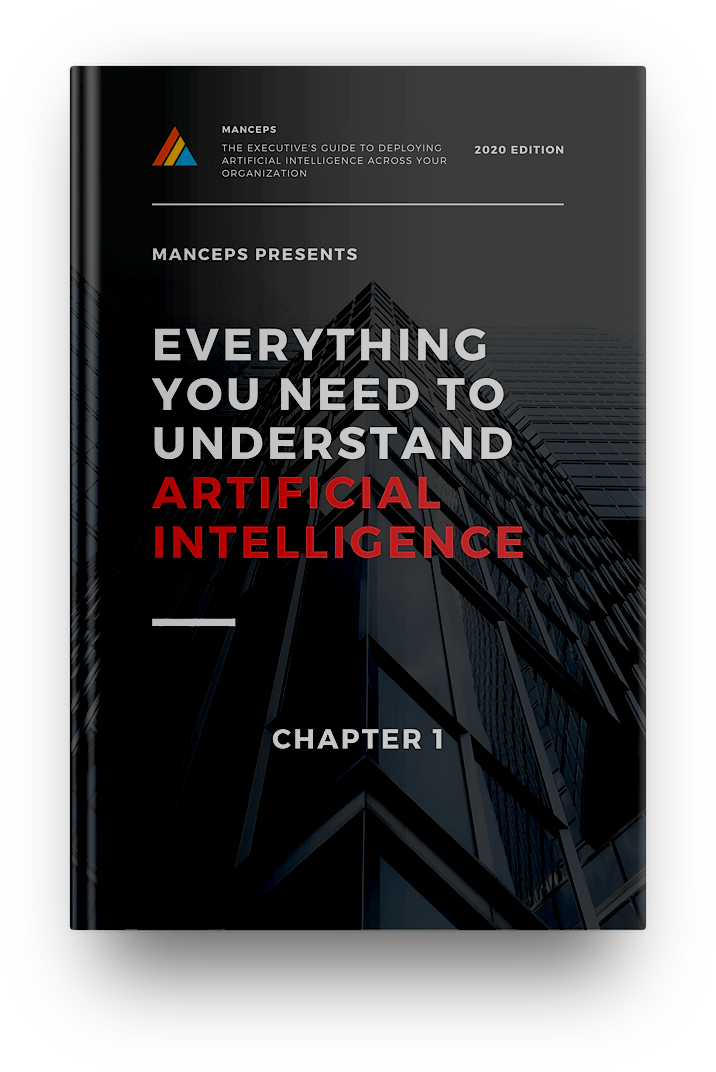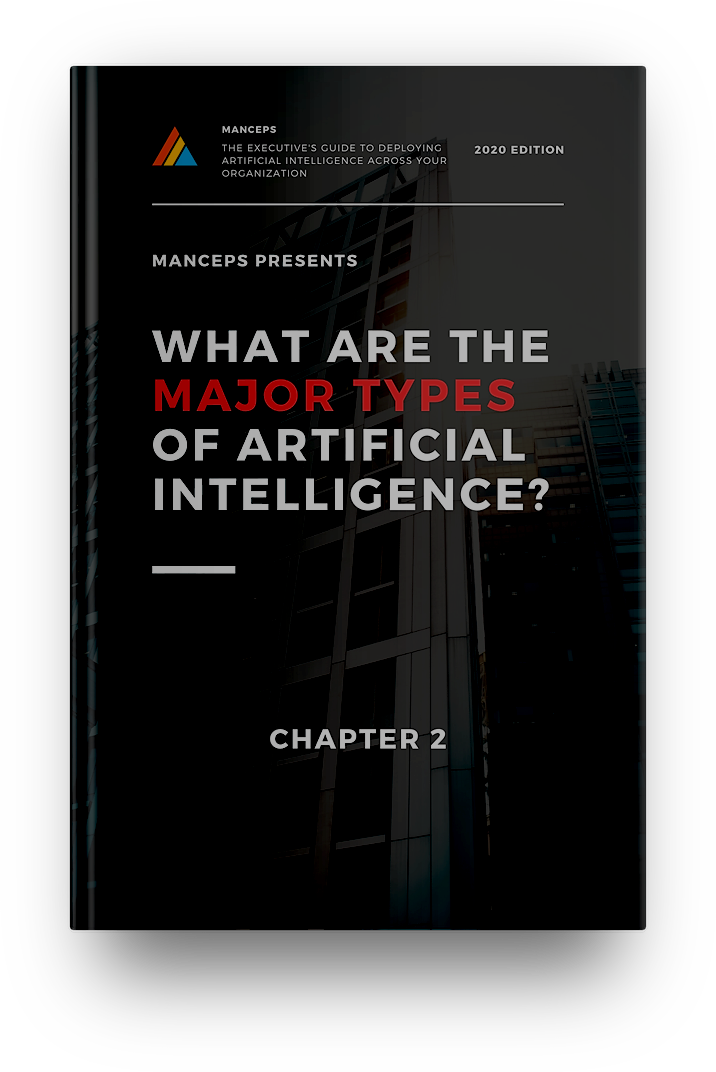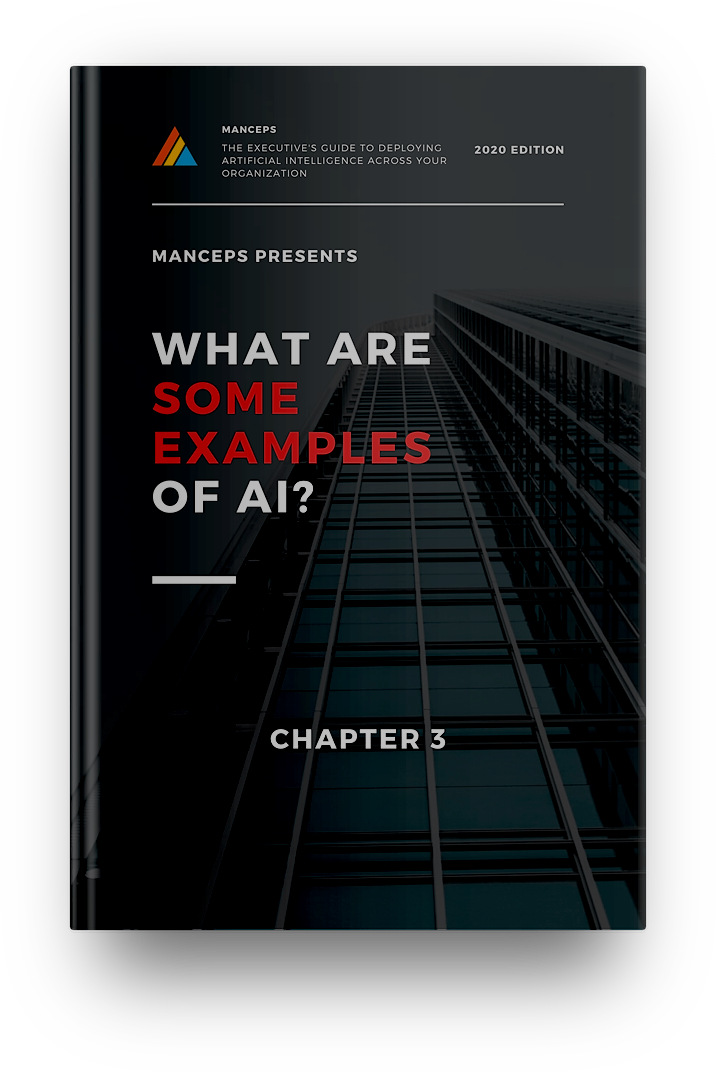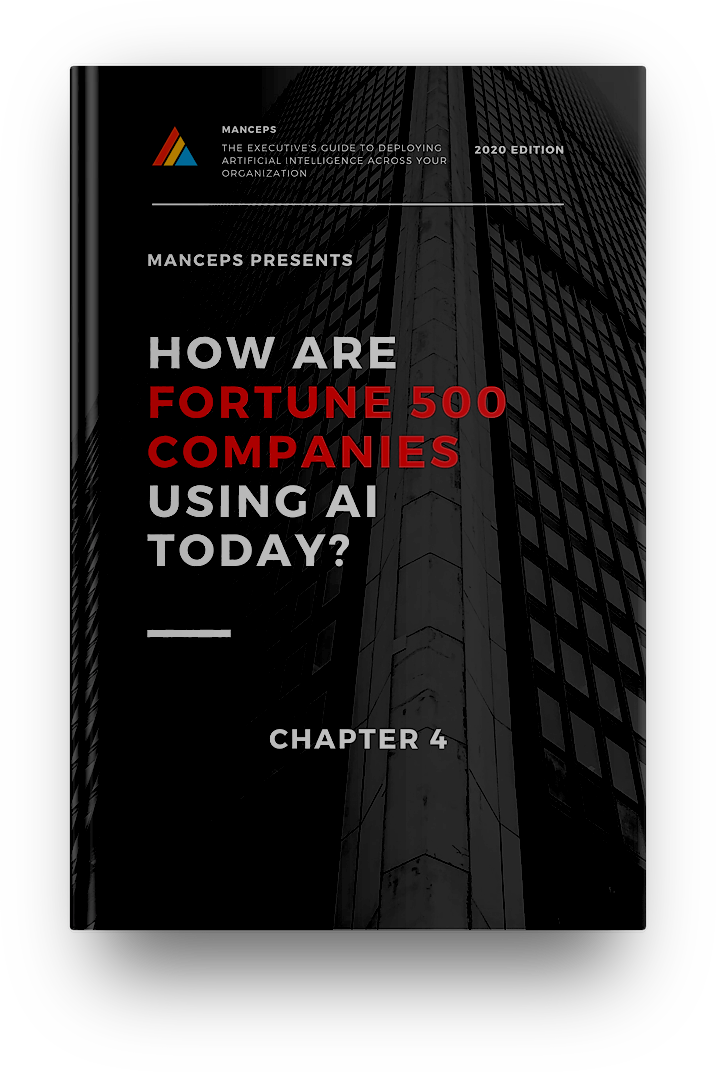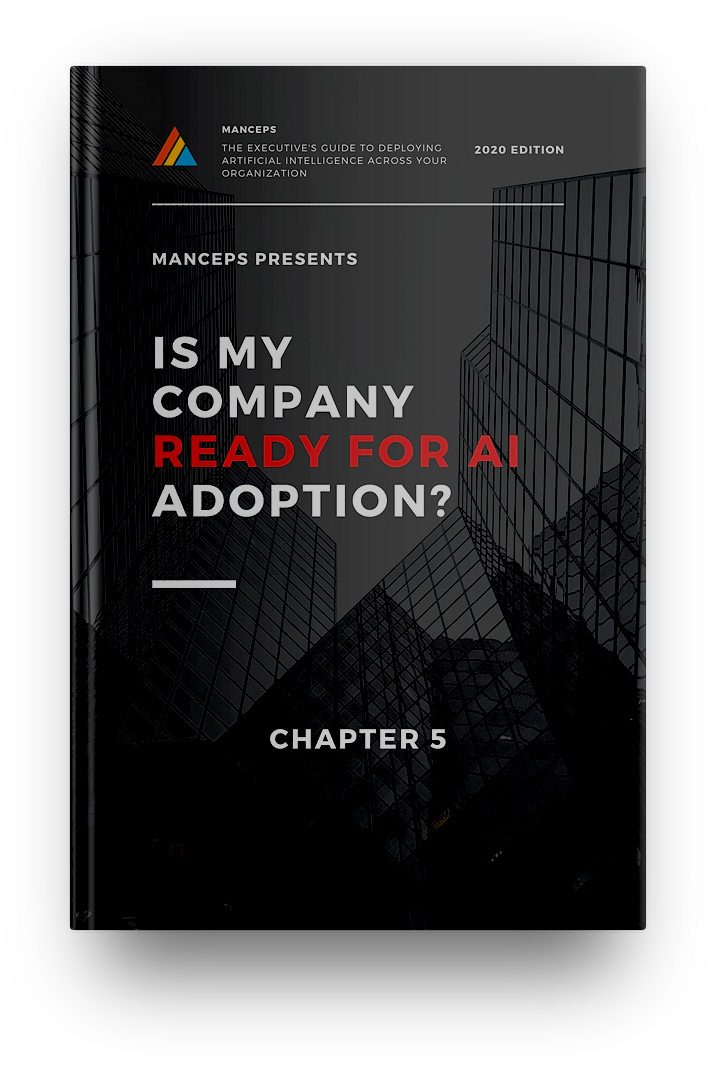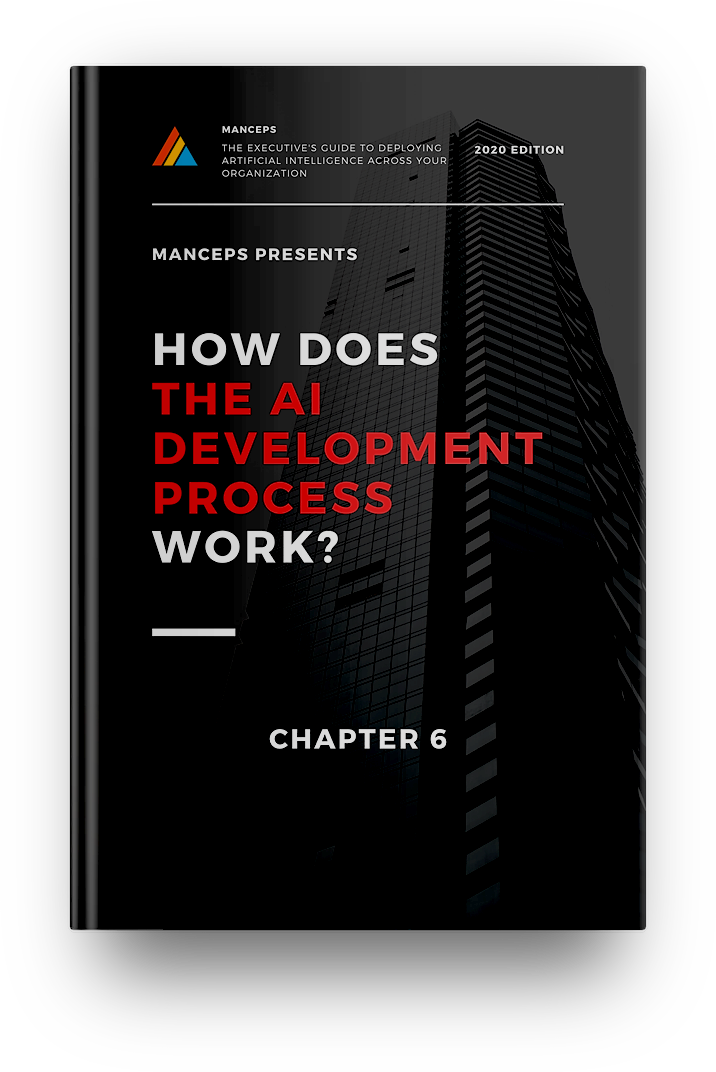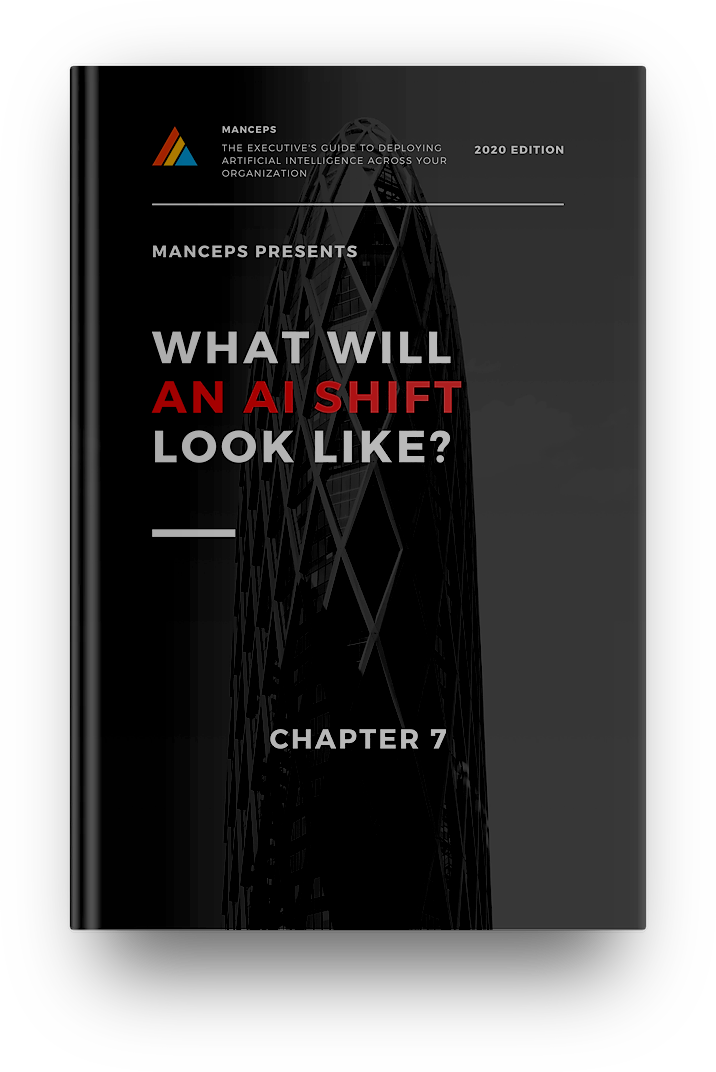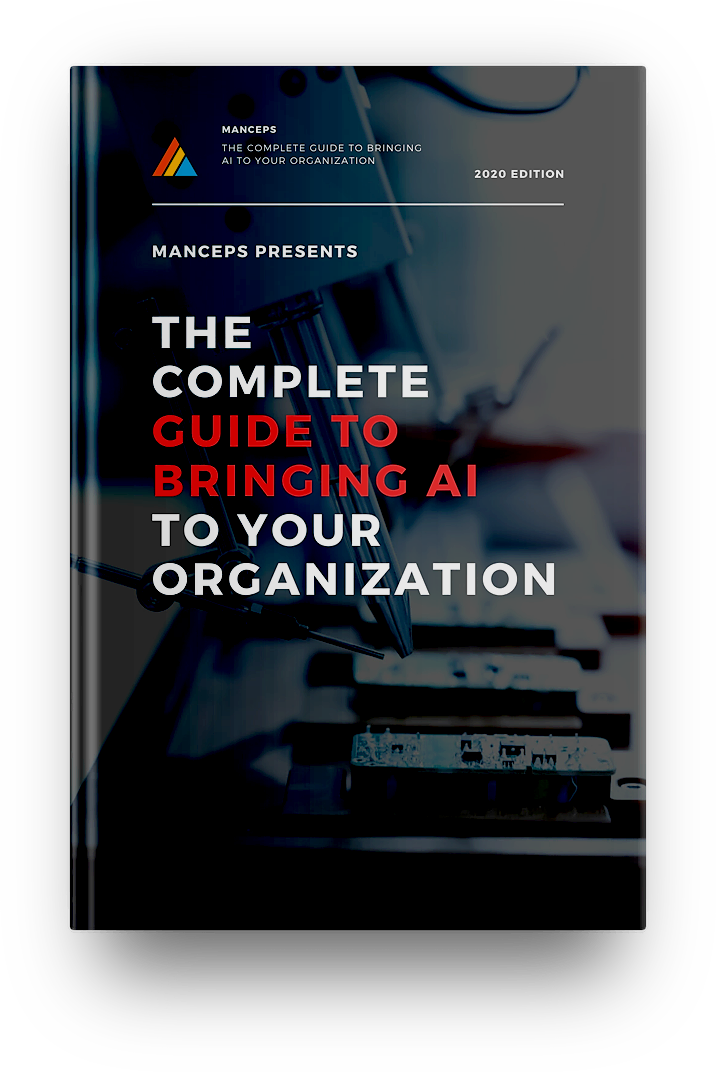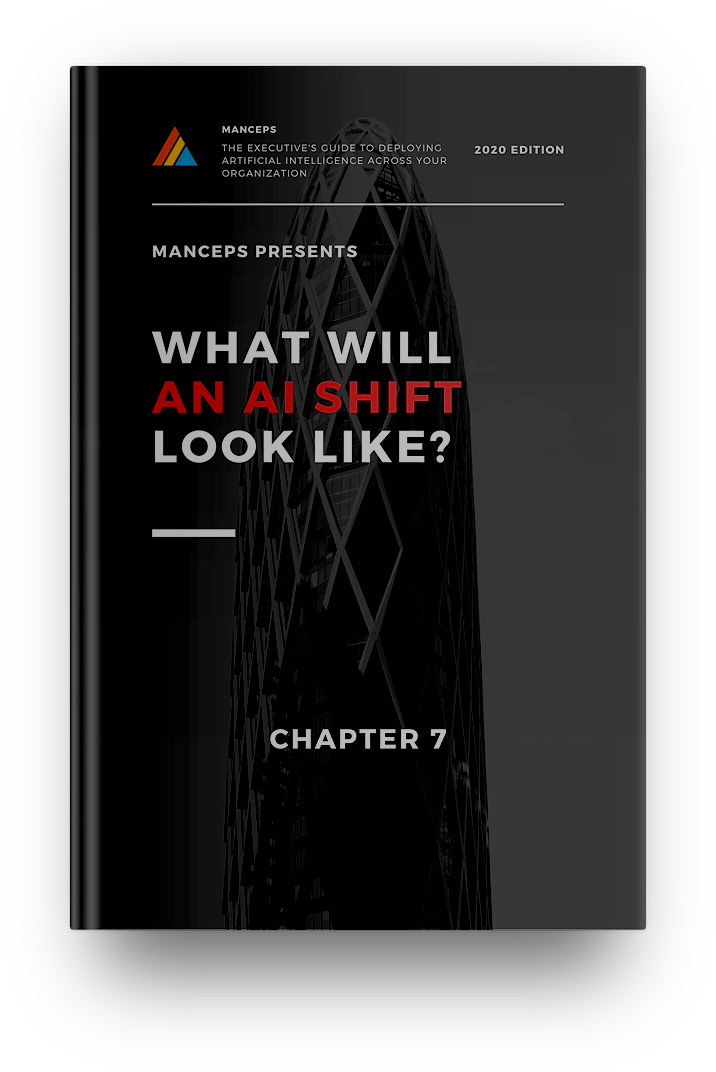
Free Resource
What Will An AI Shift Look Like?

A New Paradigm
For most of this guide, we’ve explored the ways that artificial intelligence can transform your business operationally — but one thing we haven’t quite discussed is how AI can change things culturally. The transition to computers in the 80s and 90s is a representative example of how new technology can completely change the way companies are organized, what skills workers need, and how leaders make decisions.
In this chapter, we’re going to preview some of the cultural transformations that AI will bring to your organization and how to prepare for them.
Three Major Cultural Shifts
Before diving into how to manage the shift to AI, we wanted to preview the major shifts that you can expect your company to undergo — namely, that AI will shift how teams will work together, how decisions are made, are your company’s tolerance for risk. Let’s explore each in more detail below.
AI Will Change
How Teams Work Together
AI sits at the intersection of data analytics and operations, which is to say that bringing the technology to your organization means that cross-functional teams are going to have to find ways to work more closely together.
For example, a quality assurance solution would need to gather project requirements from the on-site team, the analytics team, and the product teams.
This cross-departmental collaboration not only makes for better AI solutions but also for better organizations.
AI Will Change
How Leaders Make Decisions
Artificial Intelligence will shift decision-making from those with the most experience or the best instincts to those with the most data. By bringing more automation and data to the decision-making process, companies can expect a shift in how organizations chart a path forward. Pre-AI, we can expect the majority of decisions to be made via traditional top-down structures. Post-AI, we can expect companies to locate decision-making at lower levels.
We are already seeing this with the rise of AI-powered stock trading. Companies are already starting to favor the insights of quants over their most profitable and experienced traders.
AI Will Increase
Risk-Tolerance
As we’ve previously mentioned, because artificial intelligence becomes increasingly capable over time, we can think of it as an appreciating asset. This creates urgency to move quickly in order to capitalize on the benefits of any given model. Thus, we can expect that companies that have an AI-facing culture will take the lesson of innovating quickly to heart.
How to Ensure A Smooth Transition to Artificial Intelligence
In Chapter 5, we discussed the importance of securing buy-in from both leadership and your staff before embarking on an AI initiative. This effort, while commendable, is just the beginning. At Manceps, we’ve found that different clients treat this part of the process differently to mixed results. The companies who see the most benefits from their AI deployments are also the ones who took this part of the process seriously.
Educate Your Team About AI’s
Possibilities and Misconceptions
Over time, we’ve come to realize that the companies that experienced the smoothest AI transition were the very same that invested in AI education throughout the process.
Resources like this can help your employees wrap their head around AI and start to imagine possible AI initiatives they may wish to deploy in their own departments.
Any educational component should not only focus on the impact AI will have on your organization but also on the employees themselves. When companies bring forth greater AI-powered automation, workers can expect to spend less time on repetitive tasks, freeing them up for more valuable pursuits.
When planning to educate your organization about AI, we offer these tips:
- Tailor the message for different stakeholders throughout the business but don’t limit your AI education initiatives to those directly involved in the project.
- Focus on the why as opposed to features of the technology.
- To correct misconceptions, be sure to spend a little time differentiating between AI’s (more boring) corporate applications from its R2-D2/Terminator pop culture associations.
Create a Transparent
Map for AI Deployment
Avoid problems along the way by creating a clear AI adoption plan. By being transparent about the roadmap for the project, employees can get used to the transition over time. This allows for a step-by-step adoption as opposed to an all-at-once approach.
In the beginning, you can roll out your new AI solution to tech-savvy stakeholders or teams. By offering the solution first to early adopters, you are effectively creating an army of evangelists that can then encourage your wider teams to try the new technology with an open mind.
Remember, AI requires internal champions — so try to locate those champions among those who are particularly interested in new technologies. Bring them into testing initiatives to give leaders a glimpse into how everyone else might react.
By going slow, you give your employees time to adjust to what may otherwise feel like an abrupt and radical change.
Treat Education as
Ongoing and Iterative
Change management doesn’t end when your AI solution launches, which is why we always advise our clients to engage in ongoing education to maximize their investment in AI.
To do this, try to push beyond the usability standard to the value standard. What we mean is that the goal of ongoing education isn’t just to ensure your team knows how to use the solution but also that they see the value in it and how it helps them.
Uncertainty can cause a lot of issues for your organization. If you invest heavily in deploying an AI system but then fail to train your people, you will be leaving many of AI’s benefits on the table.
There are many different ways to train your workforce. We’ve seen it done via documentation, tutorials, webinars, and youtube videos. The trick is to find something that works for your organization and stick to it so everyone can enjoy the benefits of AI.
Explore Our Other Guides
We've written up lots of articles to help business professionals orient themselves around AI. Learn how Artificial intelligence can meaningfully change how your organization does business by exploring the resources below.


